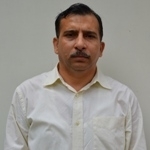| #1133 | 3715 | January 05, 2014 | By Ashwani Gupta | |||||||||||||||||||||||||||||||||||||||||||||||||||
|
The announcement by Paresh Baruah, leader of ULFA (I) in December 2013 of a new alliance between various insurgent groups[1] in the Northeast to jointly fight the common enemy has the potential to once again dislodge the fragile peaceful state existing today. He said that the insurgent groups have been working on the modalities for a number of years and a formal announcement would soon be made on the planned alliance. He also emphasized that groups already in talks with the government agencies will not be part of the proposed alliance. The insurgency in the Northeast is one of the longest insurgencies having destabilized the region for nearly six decades. Three major fault lines have been exploited by various insurgent groups, namely, locals versus outsiders, tribals versus non-tribals and inter tribal rivalries. Over the years the fault lines have been used to exploit the emotions of the masses on basis of tribal identity and ethnic sub-nationalism to carve out their areas of influence as well as have secure bases and sanctuaries along with perennial sources of funding. There are 15 major active insurgent groups as per Ministry of Home Affairs Annual Report 2012-13[2], though the South Asia Terrorism Portal (SATP) lists 38 active groups. The insurgent groups have suffered heavy reversals in the last 10 years due to consistent regularity of operations by army and to some extent by the state police. The insurgents have suffered heavy casualties with almost 32,000 of their cadres killed/ captured/ surrendered. Their training camps across the border in
The local population’s tacit support allowed the insurgent groups to flourish in the initial stage but over the years people suffered heavily due to extortion and other means of enriching the coffers of various militant groups. The development of the region has been stymied due to insurgency, political instability and ethnic conflicts[4]. The return of peace in Tripura and Mizoram are a testimony of local support in minimizing the bane of insurgency. Peace deals with the central government have led to cessation of hostilities in Nagaland and at the same time it has given leeway to the insurgents to maintain their camps, like NSCN (IM) maintains about a dozen camps. Today, the common man craves peace and is not keen to unnecessarily bear the burden of misplaced obligation of sub-nationalism propagated by the insurgent leaders. The massive rally in Dimapur on 31 October 2013 against multiple tax collection[5] by insurgent groups was an indicator of the harassment faced by people on a regular basis and their reluctance to propagate the insurgent cause. The growing intolerance of locals can be gauged from the fact that an NSCN (IM) camp in Zunheboto district in Nagaland was attacked on 30 December 2013 by locals of sema tribe against the harassment of two girls at the insurgent checkpost. The same action would have been unthinkable two decades ago. Active insurgency today is confined to states of Another probable motive could be the dwindling influence of ULFA(I) within Peace initiatives by the central government will require reinforced focus to bring a quicker resolution to many ongoing deliberations. The security forces and the intelligence agencies will have to maintain their vigil against any escalation of violence by ULFA(I) or its old associates. Any attempt at destabilizing peace will need to be dealt with ruthlessly to avoid a reoccurrence of another violent cycle of death and destruction. The author is a Senior Fellow at CLAWS Views expressed are personal
{C}{C}{C}[2] See Annual Report 2012-13 of MHA, Annexure IV pp 214 {C}{C}{C}[3] See Annual Report 2006-07 of MHA, Annexure II pp 139,140 and Annual Report 2012-13, Annexure IV pp 214 {C}{C}{C}[4]{C}{C}{C} Sreeradha Datta, The Northeast complexities and its Determinants, Shipra Publications, | ||||||||||||||||||||||||||||||||||||||||||||||||||||||
| ||||||||||||||||||||||||||||||||||||||||||||||||||||||

|
Ashwani Gupta |


